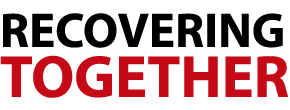Disasters affect every person differently. During the recovery phase, community members may be eager to share their stories or may exhibit signs of post-traumatic stress.

Sonoma County Library encouraged community members to contribute to a “gratitude tree” in each of its branches, following the 2017 Northern California wildfires
Library leaders should anticipate a range of mental health challenges in the aftermath of a disaster and consider ways that they can support community healing.
Following the 2017 Northern California wildfires, Sonoma County Library staff created spaces and activities to help encourage healthy sharing between residents.
“It felt like we saw our job as a way to witness the community moving through trauma,” said Kyle O’Neil, training specialist with Sonoma County Library. “Branches had different practices to let community members share their experiences and connect or reconnect with others.”
Through group activities, passive programming and special events, libraries throughout Sonoma County encouraged patrons to engage in healthy expressions of grief and thanks.
“Each library branch crafted a ‘Gratitude Tree’ and prompted kids to express gratefulness on a leaf,” said Courtney Klein, librarian at the Sebastopol Regional Library. “We have created comforting passive activities on adult tables such as adult coloring, origami, knitting, crocheting, puzzles, and a poem station.”
Through partnerships with local nonprofits and county health departments, libraries in Sonoma, Butte and Shasta counties have also hosted guest speakers and held workshops to help support community recovery.
Sessions led by therapists have focused on healthy coping mechanisms. Weekly visits from county social workers have helped connect patrons to vital services and mental health supports.
To encourage collective healing after a disaster, libraries can:
- Invite the community to celebrate the reopening of library facilities
- Create opportunities for expressions of grief, celebration and thanks:
- Collect “thank you” messages for first responders
- Ask community members to share something they are thankful for or to add messages to a community “gratitude tree”
- Encourage community members to tell their own stories of recovery; gather stories and artifacts for a future exhibit or special collection
- Integrate healing reflection activities into existing library programs, such as storytimes, conversation clubs or library literacy services
- Promote mental health supports through flyers, special programs and passive activities
- Encourage staff and volunteers to provide mental health resources to those who may be struggling; provide calming passive activities, such as coloring, painting, puzzles or games
Tools & Resources
- Skills for Psychological Recovery (SPR): Focuses on longer-term recovery in the weeks and months following a disaster. SPR resources include guides, tip sheets, handouts, sample conversations and prompts.
- The Children’s Psychological Health Center offers Guided Activity Workbooks organized by disaster type. The workbooks include activities to help children make sense of a disaster and to reflect in healthy ways about their experiences. Workbooks can be used as part of children’s programming or to help inform passive programs for all ages.
- The Substance Abuse and Mental Health Service Administration (SAMHSA) offers extensive recovery resources, including printable tips for coping with grief after a disaster and a vast collection of disaster-specific resources.
